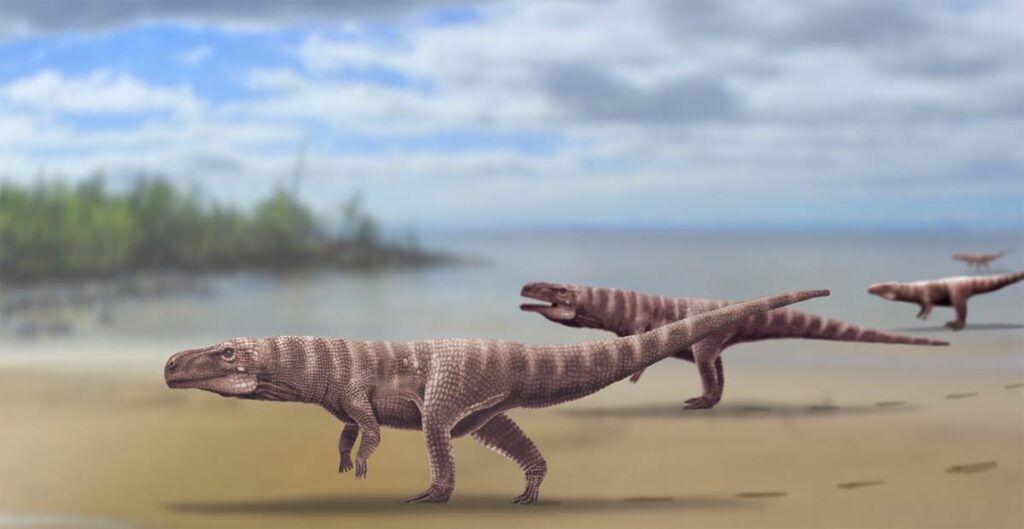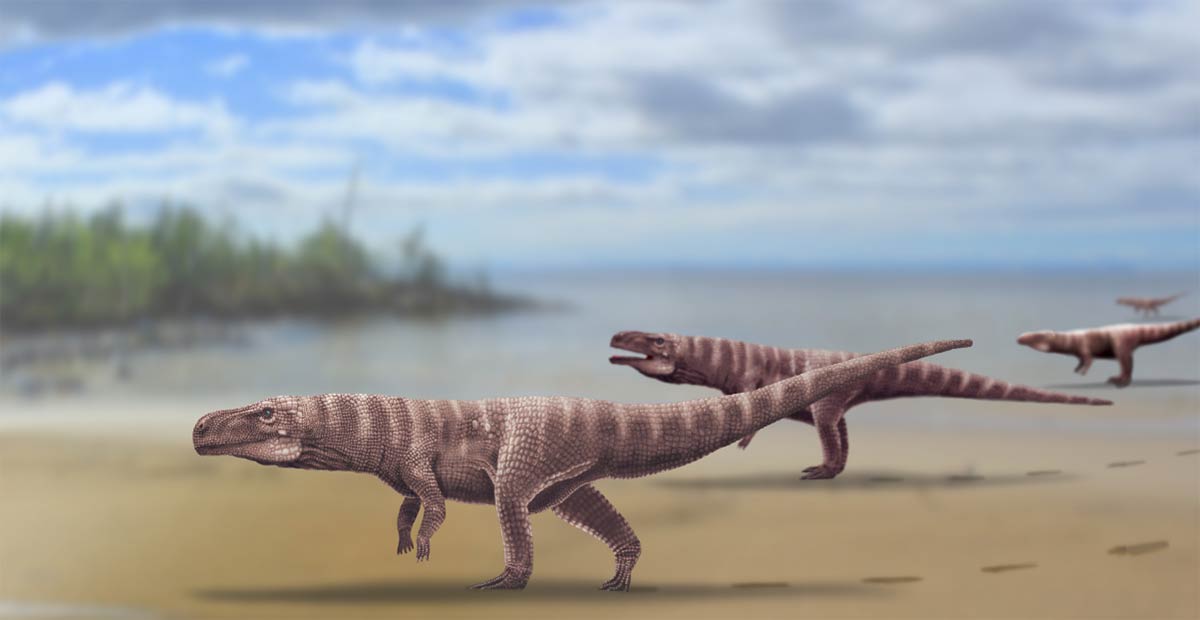

The discovery of large, well-preserved footprints belonging to an ancestor of modern-day crocodiles from the Lower Cretaceous Jinju Formation of South Korea is reported this week in Scientific Reports. The study suggests that footprints found previously, thought to have been made by giant pterosaurs walking on two legs, may have instead been made by ancient crocodile relatives.
Kyung Soo Kim, Martin G. Lockley and colleagues discovered multiple sets of footprints during excavation at the Sacheon Jahye-ri site, near Sacheon City, South Korea. The tracks ― which the authors name Batrachopus grandis ― belong to a new species of crocodylomorph, which are ancestors to modern-day crocodiles, fish-eating crocodiles and alligators.
Two-footed Crocs
The international research team was stunned to discover that some species of ancient crocodiles walked on their two hind legs like dinosaurs and measured over three meters in length.
University of Queensland paleontologist Dr Anthony Romilio said the researchers first thought the similar-shaped fossilized footprints were from another ancient animal known as the pterosaurs.
“At one site, the footprints were initially thought to be made by a giant bipedal pterosaur walking on the mudflat, we now understand that these were bipedal crocodile prints,” Dr Romilio said.
“The footprints measure around 24 centimeters, suggesting the track-makers had legs about the same height as human adult legs. These were long animals that we estimate were over three meters in length. “And while footprints were everywhere on the site, there were no handprints.”

Batrachopus trackmaker to human scale. ( Anthony Romilio, The University of Queensland, Brisbane, Australia / Nature)
Look, No Hands!
The research team, led by Professor Kyung Soo Kim from Chinju National University of Education, soon found clues as to why there were no handprints.
“Typical crocodiles walk in a squat stance and create trackways that are wide,” Professor Kim said. “Oddly, our trackways are very narrow looking – more like a crocodile balancing on a tight-rope. When combined with the lack of any tail-drag marks, it became clear that these creatures were moving bipedally. They were moving in the same way as many dinosaurs, but the footprints were not made by dinosaurs. Dinosaurs and their bird descendants walk on their toes. Crocodiles walk on the flat of their feet leaving clear heel impressions, like humans do.”

Photographs of well-preserved in situ Batrachopus grandis ichnosp. nov. track impressions. (Image: Kyung Soo Kim, Chinju National University of Education, Kyungnam, South Korea / Nature)
The footprints dated between 110-120 million years ago and were discovered after analyzing animal track sites in what is now known as South Korea.
Researchers initially questioned the absence of hand impressions from the trackways, given that today’s typical crocodiles are ‘four-legged’ or quadrupedal.
“Fossil crocodile tracks are quite rare in Asia, so finding an abundance of nearly one hundred footprints was extraordinary,” Dr Romilio said.
“As an animal walks, the hind feet have the potential of stepping into the impression made by the hand and ‘over-printing’ it, but we find no evidence of this at these Korean sites. It isn’t due to poor preservation either, because these fossils are spectacular, they even have the fine details of the toe-pads and scales on their soles preserved.”
The findings suggest that tracks found at younger sites, originally believed to have been made by giant pterosaurs able to walk on two legs to protect their wings when on land, may instead belong to crocodylomorphs. This supports the general consensus of those studying trace fossils that pterosaurs walked using all four limbs, and highlights the need for re-examination of other morphologically similar specimens from this period in history.
The full report is published by Nature, Scientific Reports